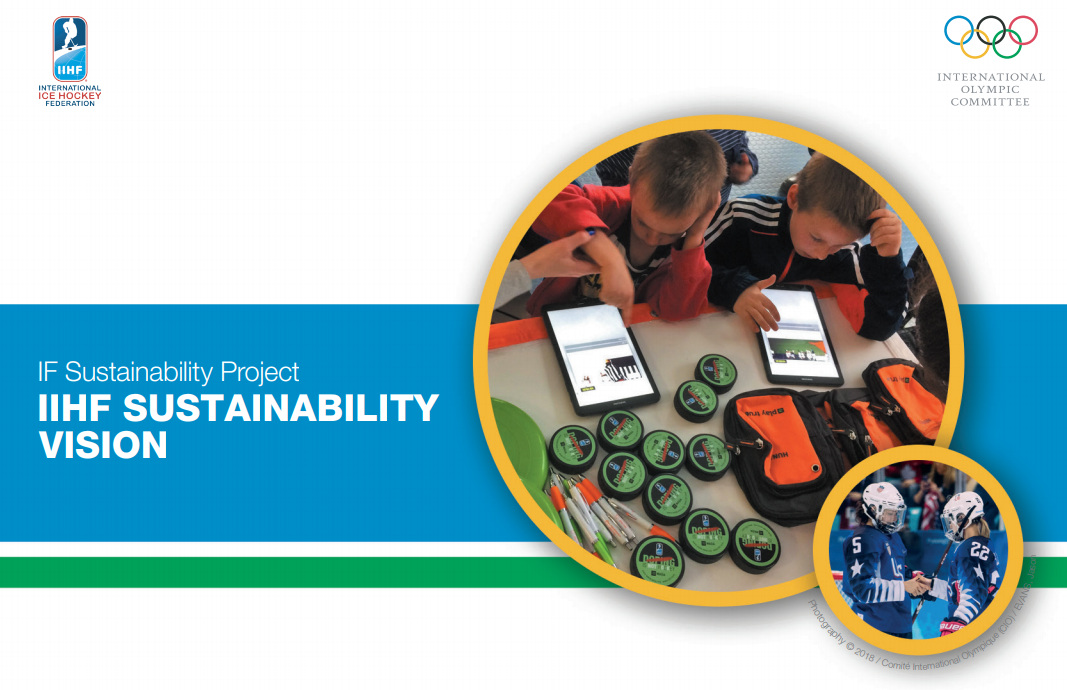
The International Ice Hockey Federation (IIHF) has been actively committed in the pursuit of the United Nations Sustainable Development Goals (SDGs) as an integral part of its sustainability strategy. Aware of the imminent threats of climate change, IIHF has joined the IOC as a participant of the UN Sports for Climate Action Framework and pledged to stop plastic waste as part of the Clean Seas campaign.
In 2020, and five years after the publication of the “IIHF Manual for Sustainable Events”, the federation published a new document portraying the “IIHF Sustainability Vision”, a reflection of the IIHF’s aspirations in regards to sustainability within its organisation, its events and the broader ice hockey family.
The IIHF Vision for Sustainability spans across its different spheres of influence:
- As an organisation the federation follows the premise of “keeping your own house clean”. With the goal of staying as sustainable as possible, IIHF seeks to lead by example including the use of green energy, having a recycling system in place, eliminating the use of single-use plastic bottles and the promotion of water filters, generally taking a continuous improvement approach at the organisational level.
- Member National Associations (MNAs) and stakeholders are encouraged to have their own sustainability strategies responding to their resources and local contexts. The federation recognises best sustainability practices amongst its members since 2019 through its IIHF Sustainability Award.
- IIHF Events are asked to follow the IIHF Manual for Sustainable Events designed to make sustainability an integral, and easy to apply, component of event planning.
However, the manual is not meant as a one-size-fits-all document, but rather a guide that can allow any organiser to be flexible.
BENEFITS
- By creating opportunities to communicate actions by its members and stakeholders, an IF can serve to multiply the effect of positive initiatives by promoting ideas and collaboration.
- The publication of a vision can serve internally as a reference of direction but it can also have external effects. It can create awareness on what is relevant to the organisation and foster relationships with current and potential stakeholders, such as new possible sponsors, which can align and support that vision.
Click here to download the case study